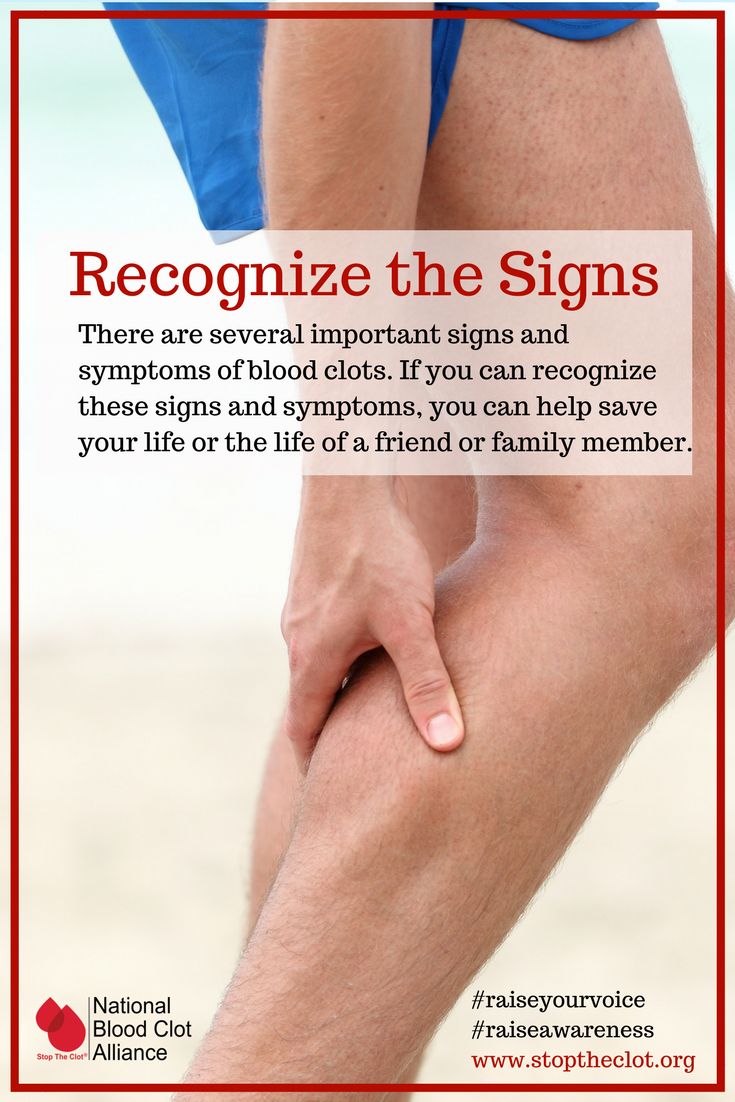Symptoms of blood clot in upper leg. Understanding Deep Vein Thrombosis: Symptoms, Risks, and Prevention Strategies
What are the symptoms of deep vein thrombosis. How can you identify the risk factors for DVT. What preventive measures can be taken to avoid blood clots. How is deep vein thrombosis diagnosed and treated. Why is early detection of DVT crucial for preventing complications.
Recognizing the Signs and Symptoms of Deep Vein Thrombosis
Deep vein thrombosis (DVT) is a serious condition that occurs when a blood clot forms in a vein deep within the body, typically in the lower leg or thigh. Identifying the symptoms of DVT is crucial for early detection and treatment. While some cases may go unnoticed, there are several telltale signs to watch for:
- Swelling in the affected leg
- Pain or tenderness, often described as a cramping sensation
- Warmth in the affected area
- Redness or discoloration of the skin
- Increased visibility of surface veins
It’s important to note that approximately 30-40% of DVT cases may not present typical symptoms, making regular check-ups and awareness of risk factors essential for prevention and early detection.
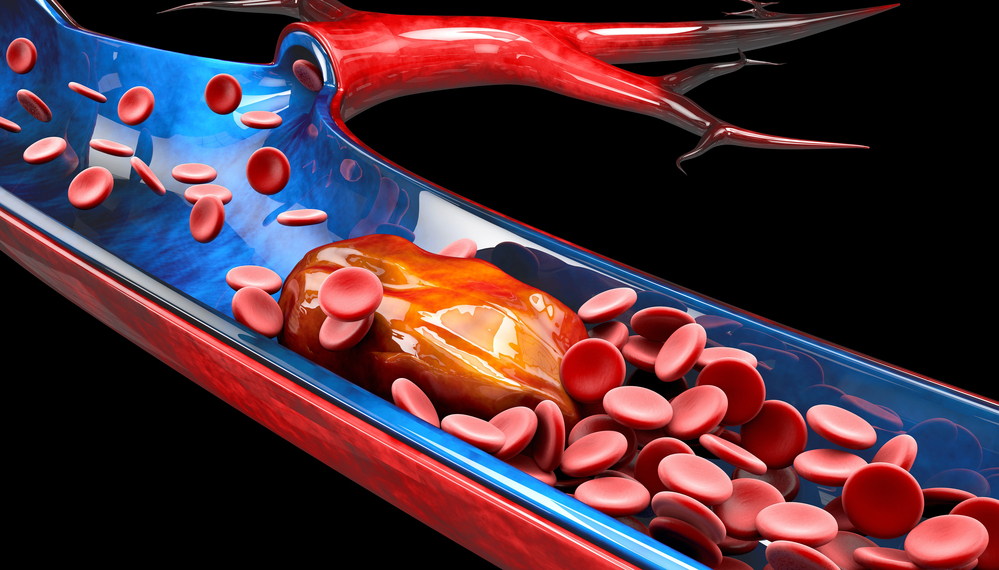
Silent Symptoms: The Hidden Danger of DVT
Why do some cases of DVT go unnoticed? The absence of noticeable symptoms in a significant percentage of cases is due to the deep location of the clot and individual variations in pain perception. This “silent” nature of some DVTs underscores the importance of being aware of risk factors and taking preventive measures, especially for those in high-risk categories.
Understanding the Risk Factors for Deep Vein Thrombosis
Certain factors can increase an individual’s likelihood of developing DVT. Understanding these risk factors is crucial for prevention and early intervention. Some of the primary risk factors include:
- Prolonged immobility (e.g., long flights, bed rest)
- Recent surgery or injury
- Age (risk increases with age, especially over 60)
- Obesity
- Smoking
- Hormonal treatments (e.g., birth control pills, hormone replacement therapy)
- Pregnancy and postpartum period
- Cancer and its treatments
- Chronic heart or lung diseases
- Previous history of DVT or family history of blood clotting disorders
Is there a genetic component to DVT risk? Indeed, some individuals may have an inherited condition called thrombophilia, which increases the blood’s tendency to clot. This genetic predisposition, combined with environmental factors, can significantly elevate the risk of developing DVT.
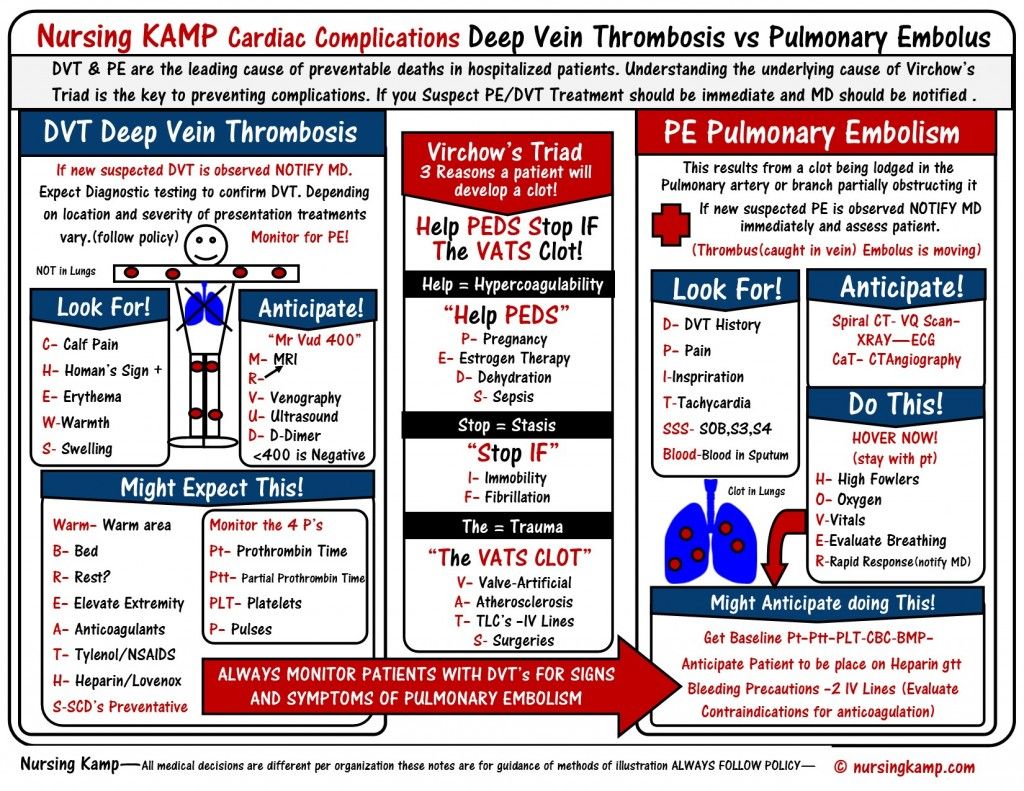
Preventive Measures to Reduce the Risk of Blood Clots
Taking proactive steps to prevent DVT is essential, especially for those with known risk factors. Here are some effective preventive measures:
- Stay active and avoid prolonged periods of immobility
- Exercise regularly, focusing on leg movements
- Maintain a healthy weight
- Stay hydrated, especially during long travels
- Wear compression stockings if recommended by a healthcare provider
- Follow post-surgery mobility instructions carefully
- Quit smoking
- Manage underlying health conditions effectively
How can you prevent DVT during long travels? When on long flights or car rides, try to move your legs frequently. Simple exercises like ankle rotations, calf raises, and walking up and down the aisle (when safe to do so) can help promote blood circulation and reduce the risk of clot formation.
The Importance of Early Detection and Prompt Treatment
Early detection of DVT is crucial for preventing potentially life-threatening complications such as pulmonary embolism. If you experience symptoms suggestive of DVT, seeking immediate medical attention is paramount. Diagnosis typically involves:

- Physical examination
- Ultrasound imaging
- D-dimer blood test
- In some cases, venography or CT scans
What makes early detection of DVT so critical? Prompt diagnosis allows for timely treatment, which can prevent the clot from growing larger or breaking off and traveling to the lungs. Early intervention significantly reduces the risk of severe complications and improves overall outcomes.
Treatment Options for Deep Vein Thrombosis
Once diagnosed, DVT requires prompt and appropriate treatment to manage the condition effectively and prevent complications. Treatment options may include:
- Anticoagulant medications (blood thinners)
- Thrombolytic therapy (clot-busting drugs) in severe cases
- Inferior vena cava (IVC) filters for patients who can’t take blood thinners
- Compression stockings to reduce swelling and prevent blood pooling
- Lifestyle modifications to address risk factors
How long does DVT treatment typically last? The duration of treatment can vary depending on the individual case, underlying risk factors, and the patient’s response to therapy. Some patients may need to continue anticoagulant therapy for several months, while others with recurrent DVT or certain risk factors may require long-term treatment.

Complications of Untreated Deep Vein Thrombosis
Leaving DVT untreated can lead to serious and potentially life-threatening complications. The most significant risks include:
- Pulmonary embolism (PE): A blood clot that travels to the lungs, obstructing blood flow
- Post-thrombotic syndrome: Long-term complications such as chronic leg pain, swelling, and skin changes
- Chronic venous insufficiency: Persistent leg swelling and skin changes due to damaged vein valves
Why is pulmonary embolism considered a medical emergency? PE can severely impair lung function and reduce oxygen levels in the blood, potentially leading to organ damage or death if not treated promptly. The sudden onset of shortness of breath, chest pain, or rapid heartbeat should prompt immediate medical attention.
Living with DVT: Long-term Management and Lifestyle Adjustments
After the initial treatment phase, individuals who have experienced DVT often need to make long-term lifestyle adjustments to manage their condition and prevent recurrence. These may include:
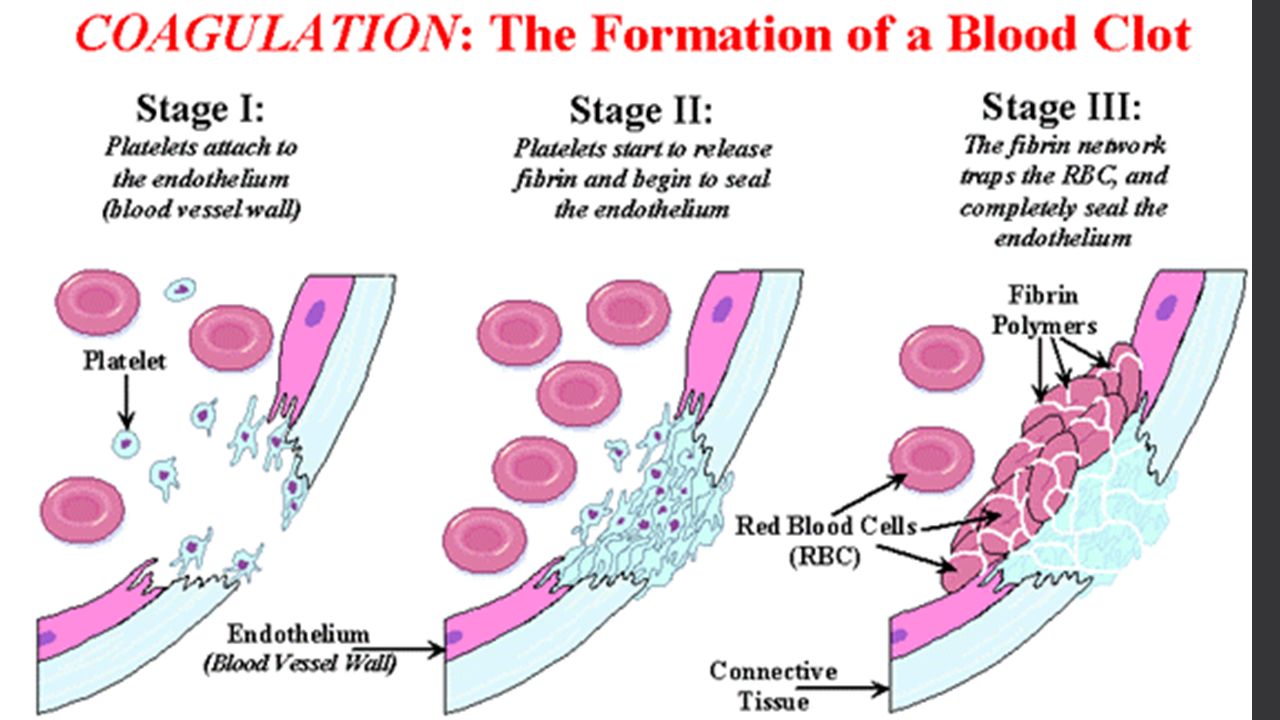
- Adhering to prescribed medication regimens
- Regular follow-up appointments with healthcare providers
- Maintaining an active lifestyle with appropriate exercises
- Wearing compression stockings as recommended
- Managing weight and addressing other modifiable risk factors
- Being vigilant for signs of recurrence or complications
How can patients balance the need for physical activity with the risk of DVT recurrence? While physical activity is crucial for preventing DVT, patients should work closely with their healthcare providers to develop a safe exercise plan. Gradual increases in activity, proper warm-up and cool-down routines, and avoiding high-impact activities in the early stages of recovery are often recommended.
Advances in DVT Research and Future Treatment Prospects
Ongoing research in the field of DVT continues to yield new insights and potential treatment options. Some areas of current focus include:
- Development of novel anticoagulants with improved safety profiles
- Gene therapy approaches for managing inherited thrombophilia
- Advanced imaging techniques for more accurate diagnosis
- Personalized medicine approaches to tailor treatment strategies
- Improved mechanical devices for preventing and treating DVT
What promising developments are on the horizon for DVT treatment? Researchers are exploring the potential of nanoparticle-based therapies that can target blood clots more precisely, potentially reducing the risk of bleeding complications associated with current anticoagulant treatments. Additionally, advancements in wearable technology may soon allow for continuous monitoring of blood flow and early detection of clot formation in high-risk individuals.

Understanding deep vein thrombosis is crucial for early detection, effective treatment, and prevention of potentially life-threatening complications. By recognizing the symptoms, addressing risk factors, and adopting preventive measures, individuals can significantly reduce their risk of developing DVT. Regular check-ups, open communication with healthcare providers, and staying informed about the latest developments in DVT management are key components of a comprehensive approach to vascular health. As research continues to advance our understanding of this condition, new and improved treatment options offer hope for better outcomes and quality of life for those affected by DVT.
How to Spot and Prevent Deep Vein Thrombosis
January 2017
Print this issue
When the Clot Thickens
En españolSend us your comments
Lots of things can cause pain and swelling in your leg. But if your symptoms stem from a blood clot deep in your leg, it can be dangerous. Blood clots can happen to anyone, anytime. But some people are at increased risk. Taking steps to reduce your chances of a blood clot forming in your veins can help you avoid potentially serious problems.
Blood clots can arise anywhere in your body. They develop when blood thickens and clumps together. When a clot forms in a vein deep in the body, it’s called deep vein thrombosis. Deep vein blood clots typically occur in the lower leg or thigh.
“Deep vein thrombosis has classic symptoms—for example swelling, pain, warmth, and redness on the leg,” says Dr. Andrei Kindzelski, an NIH blood disease expert. “But about 30–40% of cases go unnoticed, since they don’t have typical symptoms.” In fact, some people don’t realize they have a deep vein clot until it causes a more serious condition.
“But about 30–40% of cases go unnoticed, since they don’t have typical symptoms.” In fact, some people don’t realize they have a deep vein clot until it causes a more serious condition.
Deep vein clots—especially those in the thigh—can break off and travel through the bloodstream. If a clot lodges in an artery in the lungs, it can block blood flow and lead to a sometimes-deadly condition called pulmonary embolism. This disorder can damage the lungs and reduce blood oxygen levels, which can harm other organs as well.
Some people are more at risk for deep vein thrombosis than others. “Usually people who develop deep vein thrombosis have some level of thrombophilia, which means their blood clots more rapidly or easily,” Kindzelski says. Getting a blood clot is usually the first sign of this condition because it’s hard to notice otherwise. In these cases, lifestyle can contribute to a blood clot forming—if you don’t move enough, for example. Your risk is higher if you’ve recently had surgery or broken a bone, if you’re ill and in bed for a long time, or if you’re traveling for a long time (such as during long car or airplane rides).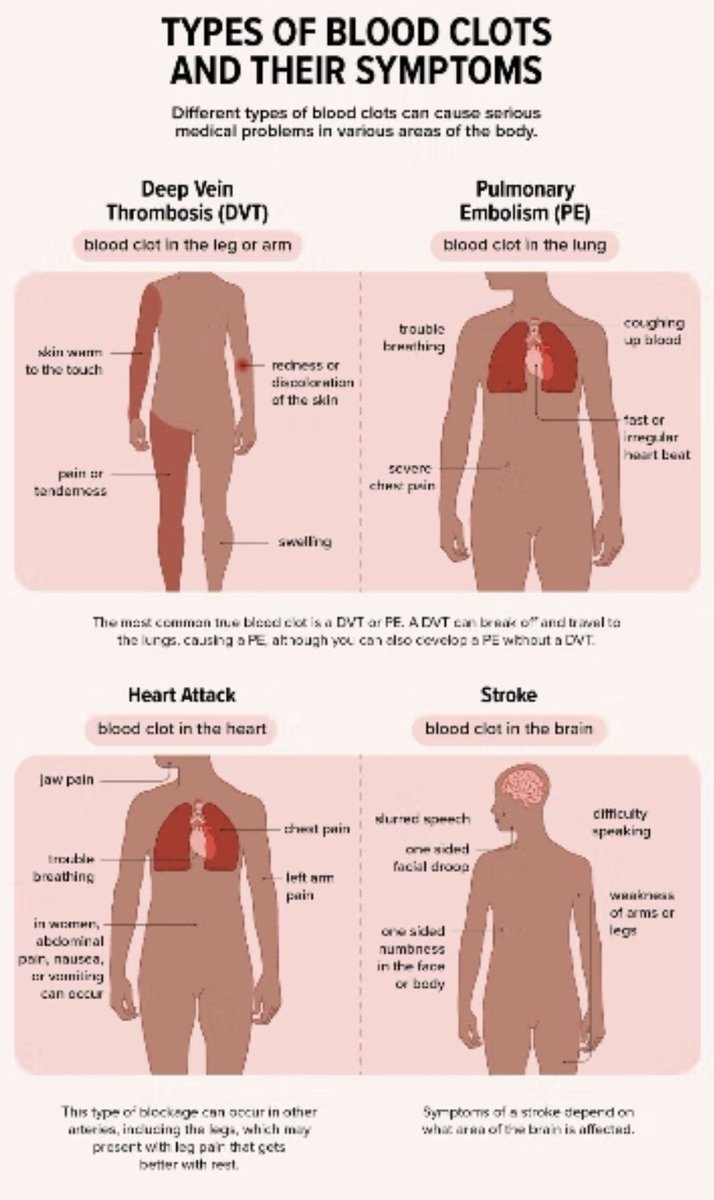
Having other diseases or conditions can also raise your chances of a blood clot. These include a stroke, paralysis (an inability to move), chronic heart disease, high blood pressure, surgical procedure, or having been recently treated for cancer. Women who take hormone therapy pills or birth control pills, are pregnant, or within the first 6 weeks after giving birth are also at higher risk. So are those who smoke or who are older than 60. But deep vein thrombosis can happen at any age.
You can take simple steps to lower your chances for a blood clot. Exercise your lower leg muscles if you’re sitting for a long time while traveling. Get out of bed and move around as soon as you’re able after having surgery or being ill. The more active you are, the better your chance of avoiding a blood clot. Take any medicines your doctor prescribes to prevent clots after some types of surgery.
A prompt diagnosis and proper treatment can help prevent the complications of blood clots. See your doctor immediately if you have any signs or symptoms of deep vein thrombosis or pulmonary embolism (see the Wise Choices box). A physical exam and other tests can help doctors determine whether you’ve got a blood clot.
A physical exam and other tests can help doctors determine whether you’ve got a blood clot.
There are many ways to treat deep vein thrombosis. Therapies aim to stop the blood clot from getting bigger, prevent the clot from breaking off and moving to your lungs, or reduce your chance of having another blood clot. NIH scientists continue to research new medicines and better treatment options.
If you think you may be at risk for deep vein thrombosis, talk with your doctor.
NIH Office of Communications and Public Liaison
Building 31, Room 5B52
Bethesda, MD 20892-2094
[email protected]
Tel: 301-451-8224
Editor: Harrison Wein, Ph.D.
Managing Editor: Tianna Hicklin, Ph.D.
Illustrator: Alan Defibaugh
Attention Editors: Reprint our articles and illustrations in your own publication. Our material is not copyrighted. Please acknowledge NIH News in Health as the source and send us a copy.
For more consumer health news and information, visit health.nih.gov.
For wellness toolkits, visit www.nih.gov/wellnesstoolkits.
What Do Blood Clots in the Leg Feel Like?
Have you ever sat on a long flight, then stood up to leave the plane and noticed that your leg hurt in a way that it hadn’t at the start of your journey? Prolonged sitting may increase the risk of developing a blood clot in the leg, which is also called deep vein thrombosis (DVT).
DVT typically forms deep within a vein in the leg. When a blood clot forms, it can obstruct blood flow, leading to uncomfortable symptoms. If a clot breaks free from the spot where it formed, it may cause a potentially life-threatening condition known as pulmonary embolism, when the clot travels through blood vessels and enters the lung.
Not all blood clots in the leg lead to pulmonary embolism; some resolve on their own. But if you notice signs that you may have DVT, seeing a doctor quickly may help you avoid dangerous complications.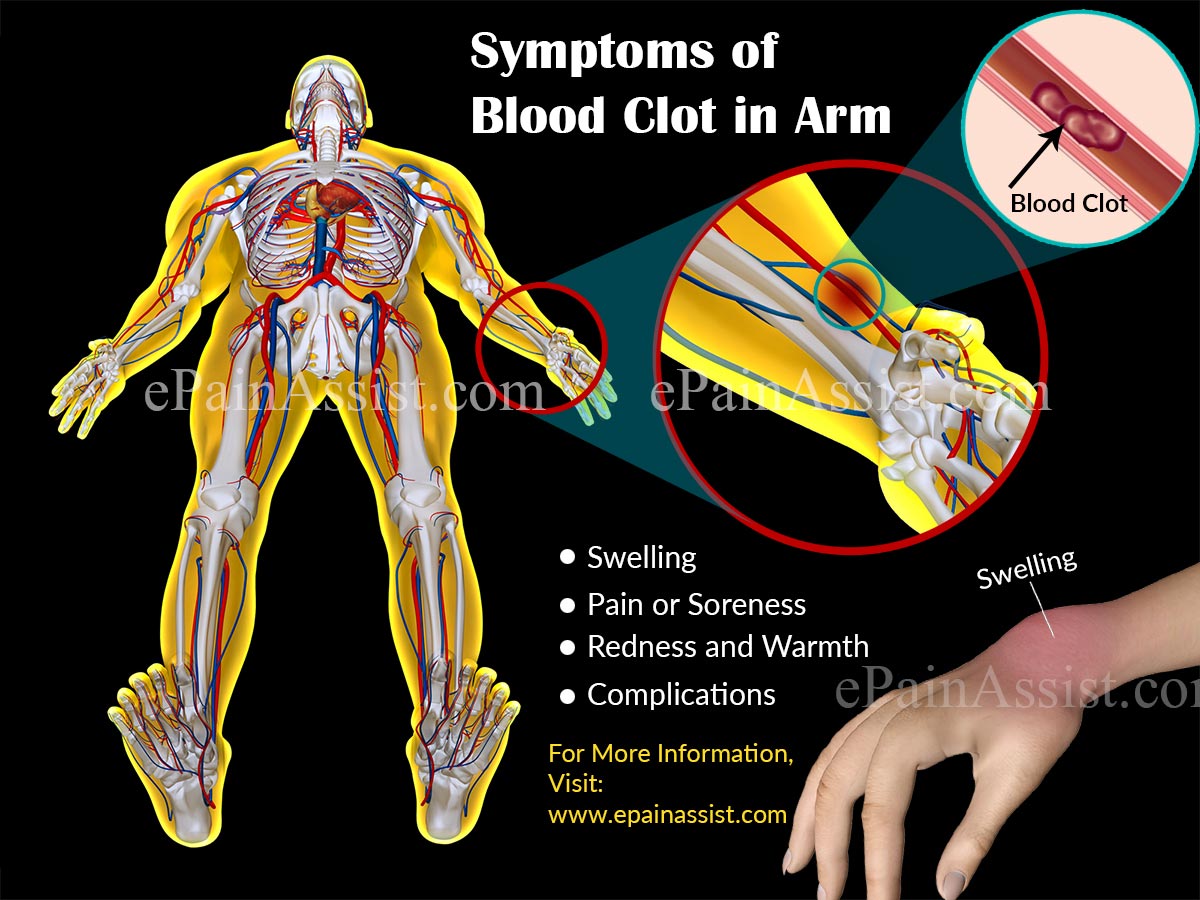
“There are effective treatments for a blood clot in the leg, most notably blood thinners, which hinder clotting ability while they’re being used,” says Vikalp Jain, M.D., vascular surgeon at Jersey Shore University Medical Center. “Seeking medical help early when you think that you may have a blood clot is always the right decision, even if it turns out to be nothing. It’s better to be safe than sorry when pulmonary embolism could be a possibility.”
Signs that you may have a blood clot
Many people who have a blood clot notice discomfort in the affected leg and can’t attribute the problem to a recent injury, overuse or another factor. They’re more common after surgery and among people on bed rest or those who sit for long periods without stretching.
Symptoms include:
- leg pain or discomfort that may feel like a pulled muscle, tightness, cramping or soreness
- swelling in the affected leg
- redness or discoloration of the sore spot
- the affected area feeling warm to the touch
- a throbbing sensation in the affected leg
Some people don’t experience noticeable symptoms, which makes it difficult for them to recognize that they should seek care.
Blood clots are more common among people who:
- smoke
- are obese
- take birth control pills or hormone replacement therapy
- have a personal or family history of blood clots
Can kids get blood clots in the leg?
“Blood clots are more common among people age 60 and older, but it’s possible for kids to experience DVT. They’re rare in healthy children, but they’re more common among kids who are hospitalized,” says Katherine Armstrong, M.D., MS, pediatric hematologist-oncologist of Joseph M. Sanzari Children’s Hospital at Hackensack University Medical Center.
Factors that may increase the risk of blood clots in children include:
- having had surgery
- having a catheter or PICC line placed in a vein
- being confined to bed
- having a family history of blood clots
- taking birth control pills (teenage girls)
When to seek care for a possible blood clot
If you think that you or your child may have a blood clot in the leg, seeing a doctor that day may help you avoid complications. If you can’t get a same-day appointment with your regular doctor, visit an urgent care center or emergency room. Quick care may help you ward off a pulmonary embolism, which may be deadly.
If you can’t get a same-day appointment with your regular doctor, visit an urgent care center or emergency room. Quick care may help you ward off a pulmonary embolism, which may be deadly.
Whether or not you’ve noticed symptoms of DVT, seek emergency care if you have symptoms of a pulmonary embolism, including:
- sudden difficulty breathing or shortness of breath
- chest pain that worsens when you try breathing deeply
- a sudden cough, especially if you produce bloody mucus
- a fast heartbeat
- dizziness or losing consciousness
Healthy habits may lower your risk of blood clots
If you have a family history of blood clots or you’re about to have surgery, talk to your doctor about ways to lower your risk of DVT.
To lower your risk of blood clots in everyday situations, make lifestyle changes, including:
- breaking up long periods of sitting (whether at home, at work or while traveling)
- being more physically active
- maintaining a healthy weight
- quitting smoking
Next Steps & Resources:
- Meet our sources: Vikalp Jain, M.
 D., Katherine Armstrong, M.D., MS
D., Katherine Armstrong, M.D., MS - To make an appointment, call 800-822-8905 or visit our website.
- Find an urgent care center near you.
The material provided through HealthU is intended to be used as general information only and should not replace the advice of your physician. Always consult your physician for individual care.
Venous thrombosis – what is it, symptoms
Venous thrombosis refers to acute diseases. There are many reasons for its occurrence, the main ones are a violation of the structure of the venous wall during surgery, trauma, radiation and chemotherapy, a slowdown in blood flow, and increased blood clotting.
According to the cause of occurrence venous thromboses are divided into several types:0004 due to blood pressure on the veins)
Venous thrombosis can also be divided by localization:
- thrombosis superficial (subcutaneous) veins lower extremities (in clinical practice referred to as thrombophlebitis , is a common complication of varicose veins – inflammation in the walls of the veins increases the tendency to form blood clots)
- deep vein thrombosis of the lower extremities
Characteristic symptoms of thrombophlebitis of superficial veins:
- Constant pulling, burning pain along the thrombosed veins, which may restrict movement in the affected limb
- Redness of the skin in the area of the affected vein
- Local (local) temperature increase in the area of the affected vein
- Hypersensitivity in the affected area of the limb
- Moderate swelling in the ankles and lower third of the legs
- Dilation of the small saphenous veins
Thrombus formation can begin anywhere in the venous system, but most often in the deep veins of the leg.
Typical symptoms seen with deep vein thrombosis include:
- Swelling of all or part of a limb
- Discoloration of the skin (development of cyanosis – cyanosis
skin of the lower extremities) or increased pattern of saphenous veins - Bursting pain in limb
Blood clots are usually located in the veins of the legs, thighs and pelvis. A person may not be aware that they have a blood clot until the clot causes significant obstruction to blood flow or the clot particles break off. With the development of thrombosis in the veins of the lower extremities, swelling and pain in the leg may appear.
Venous thrombosis is very dangerous and poses a great threat to human life and health. A blood clot formed in the deep veins of the lower leg can travel with the bloodstream to the pulmonary artery, causing partial or complete disruption of blood flow in it (this condition is called pulmonary embolism). Venous thrombosis does not always pass without a trace, and after a thrombosis, a person may develop the so-called post-thrombotic disease, which manifests itself in constant swelling of the limb and the formation of trophic ulcers.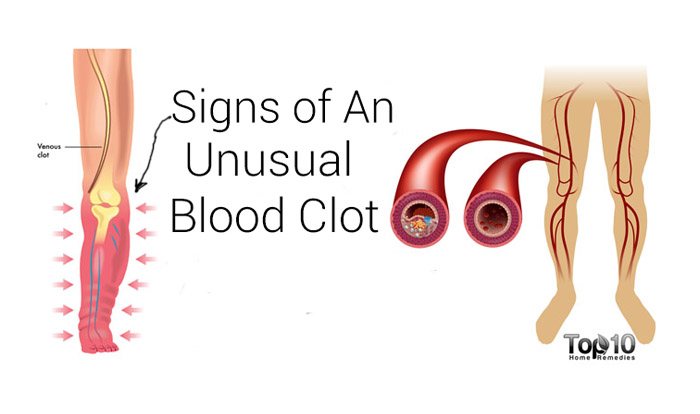
Venous thrombosis and its most dangerous complication – pulmonary embolism (PE) – are the most frequent companions of many patients in therapeutic and surgical hospitals.
Pulmonary Artery Thromboembolism (PE) is a severe life-threatening disease in which there is complete or partial occlusion of the lumen of the pulmonary artery by a thrombus. As a rule, PE is a complication of deep vein thrombosis of the legs.
Signs observed in PE are varied and not very specific.
The most common:
- Shortness of breath of varying severity (from mild to severe)
- Chest pain (in most cases “pleural”, aggravated by breathing)
- Hemoptysis is a rare symptom, body temperature may rise, cough may later join (as a rule, these signs are observed with a small embolism of small branches of the pulmonary artery)
- Shock or a sharp decrease in pressure with the development of a massive lesion of the pulmonary artery, there may be impaired consciousness
If you experience the symptoms described above, you should immediately seek medical attention at the nearest medical facility!
Sources:
- Kirienko A.
 I., Panchenko E.P., Andriyashkin V.V. Venous thrombosis in the practice of a therapist and surgeon.-M: Planida, 2012.-336s.
I., Panchenko E.P., Andriyashkin V.V. Venous thrombosis in the practice of a therapist and surgeon.-M: Planida, 2012.-336s. - Kirienko et al. .“Russian clinical guidelines for the diagnosis, treatment and prevention of venous thromboembolic complications”, journal Phlebology 2015;4 (2):3-52
- Ioskevich N.N. Practical guide to clinical surgery: Diseases of the chest, blood vessels, spleen and endocrine glands. Minsk. Higher School. 2002. 479 p.
SARU.ENO.19.06.1021
symptoms, causes, diagnosis, treatment| JSC “Medicina” (clinic of Academician Roitberg)
Contents of the article
- General information
- Causes of thrombosis
- Symptoms of thrombosis
- Complications of disease
- Diagnosis of arterial thrombosis
- Treatment
- Thrombosis prophylaxis
- Questions and Answers
- Sources
General information
Thrombosis is a pathological process of the formation of numerous blood clots in the vessels, preventing proper blood circulation. The consequence of this phenomenon is ischemia associated with tissue malnutrition, and their subsequent necrosis. With complete blockage of large blood vessels, a condition occurs that threatens the life of the patient. The most dangerous is arterial thrombosis, which prevents the full functioning of the heart and causes oxygen starvation of tissues.
The consequence of this phenomenon is ischemia associated with tissue malnutrition, and their subsequent necrosis. With complete blockage of large blood vessels, a condition occurs that threatens the life of the patient. The most dangerous is arterial thrombosis, which prevents the full functioning of the heart and causes oxygen starvation of tissues.
Causes of thrombosis
There are three main causes that can cause vascular thrombosis:
- Damage to the walls of the bloodstream caused by trauma, surgery, dietary disorders, infection of the body, after lifting weights, during labor, etc.
- A bleeding disorder resulting in increased thrombus formation due to a metabolic or hormonal imbalance.
- Blood stasis associated with prolonged immobility of the human body during a long-haul flight, travel by car, due to a serious illness, etc.
An additional factor that increases the risk of thrombosis is varicose veins, overweight, inactive lifestyle and age over 60 years.
Symptoms of thrombosis
Symptoms depend on the type of thrombosis and its location in an artery or vein. The arterial variety is characterized by:
- A sharp throbbing pain that spreads from the point of blockage of the vein.
- Feeling of numbness in the limb or area of the body where the thrombus is located, due to which the body temperature in this area drops sharply.
- Irregular heart rhythm, shortness of breath, feeling of pressure inside the sternum.
- Speech disorder, dizziness and headache if thrombosis cuts off blood flow to the brain.
During an exacerbation of venous thrombosis, patients complain of:
- Sharply increasing pain.
- Thickening and swelling of tissues in the area of thrombus formation and blood stasis.
- Swelling of the veins located closer to the surface of the body.
- Blue skin caused by tissue numbness and dark venous blood inflow.

The appearance of at least one of the listed signs should be a reason for immediate seeking emergency medical care.
Complications of the disease
The danger of thrombosis lies in its ability to create conditions that are dangerous to human life. among the most probable complications:
- Inflammation of the lungs, which can lead to the death of the tissues of these organs.
- Pleurisy destroying lungs externally.
- Oxygen starvation, disrupting the full functioning of internal organs.
- Relapses of a disease that worsens within a calendar year of the first occurrence.
Preventive measures recommended for a particular patient, taking into account his condition, allow to exclude an unfavorable scenario.
Diagnosis of arterial thrombosis
To clarify the state of the vessel duct and the presence of accumulation of blood clots in it, the following research methods allow:
- Laboratory blood test for coagulation parameters.

- Magnetic resonance phlebography.
- Scanning of arteries and veins of the lower extremities by duplex or triplex method.
- The so-called ascending phlebography with the introduction of a contrast agent into the vessels.
- Radionuclide scanning of the thrombus location.
- Thromboelastography.
Treatment
Some of the most effective ways to treat thrombosis, provided you seek help in a timely manner, are:
- Anticoagulation – taking drugs that slow down the process of blood clotting and activate the process of blood circulation.
- Placement of catheters delivering a drug to dissolve a blood clot directly to the site of its localization. The method is rarely used due to its technical complexity.
- Systemic thrombolysis, aimed at taking drugs to dissolve blood clots.
If a large thrombus has formed, the patient is indicated for surgery to remove the obstruction to the blood flow.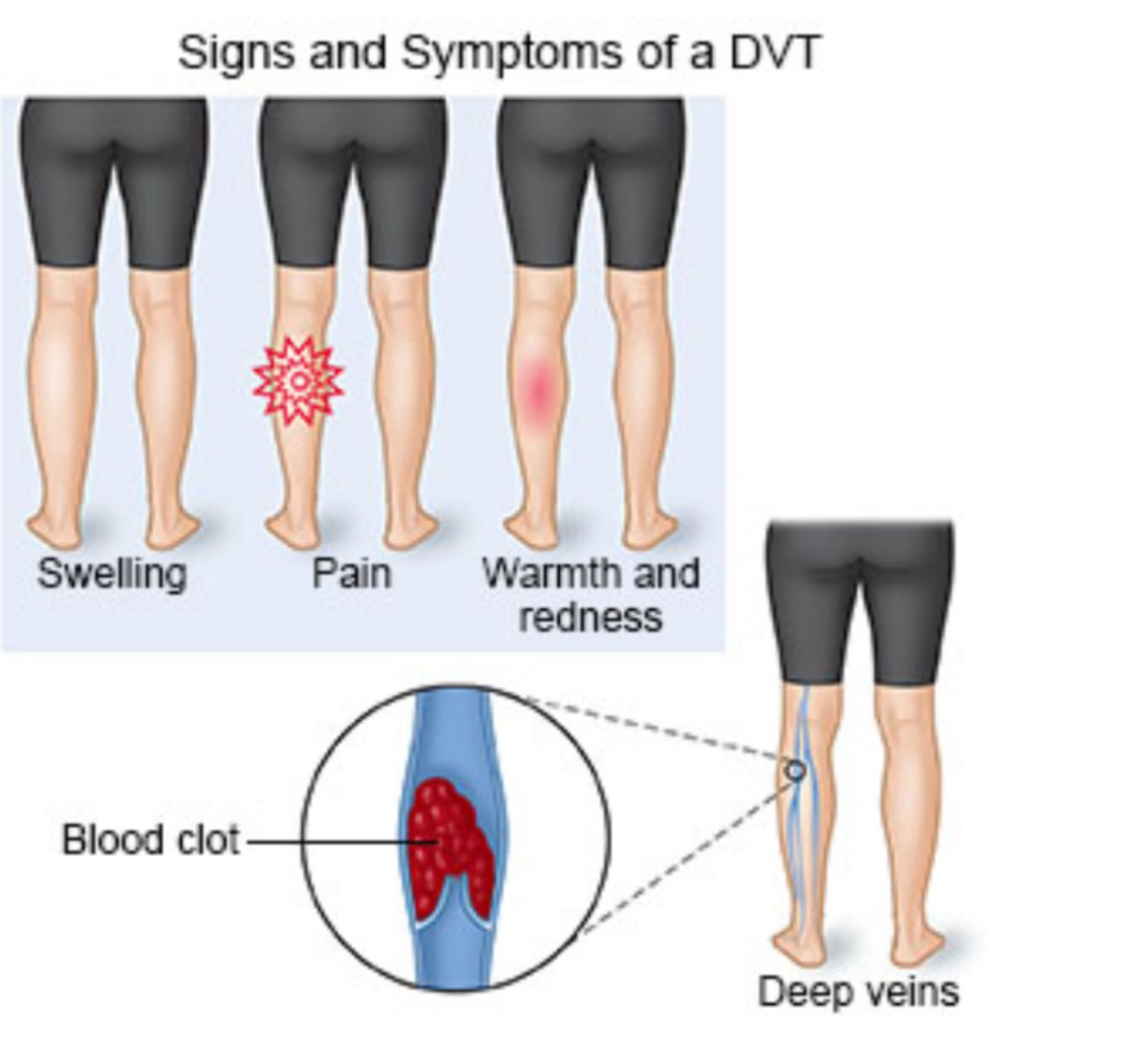
It is possible to consolidate the results of treatment and reduce the risk of relapse only if preventive measures are observed.
Prevention of thrombosis
To reduce the risk of developing the disease or its recurrence:
- Wearing compression underwear, selected taking into account the parameters of the patient’s body.
- Stop smoking, alcohol and drugs.
- Taking vitamin complexes, reviewing the diet in favor of foods with a high content of vitamins and microelements – potassium, magnesium, etc.
- Moderate physical activity, sports, refusal of a sedentary lifestyle.
- Timely treatment of existing diseases that negatively affect the state of blood vessels and blood clotting.
- Control of glucose and cholesterol levels to prevent the formation of atherosclerotic plaques.
- Measures to reduce excess body weight.
All of the above measures contribute to the restoration of blood flow and eliminate the risk of increased thrombosis.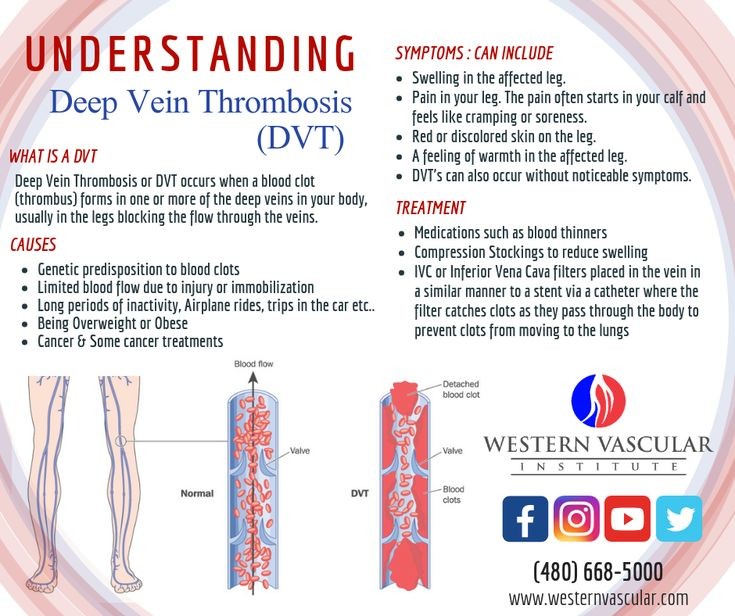
Questions and Answers
- Who should I contact if I suspect a thrombosis?
- Diagnosis and treatment for a patient with thrombosis is the responsibility of a phlebologist. Often, a vascular surgeon, a cardiologist, a neurologist and other highly specialized doctors are involved in the work, taking into account the underlying disease of the patient and the state of his body.
- Is it possible to do without surgery for thrombosis?
- It is possible to avoid surgery if conservative treatment is effective and small blood clots form in the vessels, the movement of which does not pose a risk of blockage of the vessels.
- Is the hereditary factor relevant in thrombosis?
- Most phlebologists point to external causes of the disease, which do not depend on genetic predisposition. Often, the health of citizens who do not have the prerequisites for the development of the disease face the problem of intense thrombosis.

References
The following literature was used in the preparation of the material:
- Pokrovsky A.V., Doguzhieva R.M., Bogatov Yu.P., Goltsova E.E., Lebedeva A.N. Long-term results of aortofemoral reconstructions in patients with type 2 diabetes mellitus. Angiology and vascular surgery. 2010; 16:1:48-52.
- National guidelines for the management of patients with diseases of the arteries of the lower extremities – M.: 2013.
- Zoloev G.K., Koval O.A., Litvinovsky S.V., Ivatsin N.P. Specific complications of semi-closed endarterectomy from the iliac arteries. Angiology and vascular surgery. 2006; 4:12:121-126.
- Gadeev AK, Lukanikhin VA, Bredikhin RA, Ignatiev IM Thrombolytic therapy in acute arterial thrombosis. Angiology and Vascular Surgery, 2012
- Appendix (Materials 23 (XXYII) of the International Conference in St. Petersburg). 71-73.
Author of article
Ablyazov
Irshat Ravilevich
Experience 23 years
District therapist
Make an appointment
You can consult a specialist on this disease by calling +7 (495) 126-41-31
(Votes: 7, Rating: 4) |
Call +7 (495) 775-73-60 or leave a request, we will call you back
I agree to the processing of my personal data in order to process my request and feedback on the “terms” of processing personal data in accordance with “Personal data processing policy in JSC “Medicina”.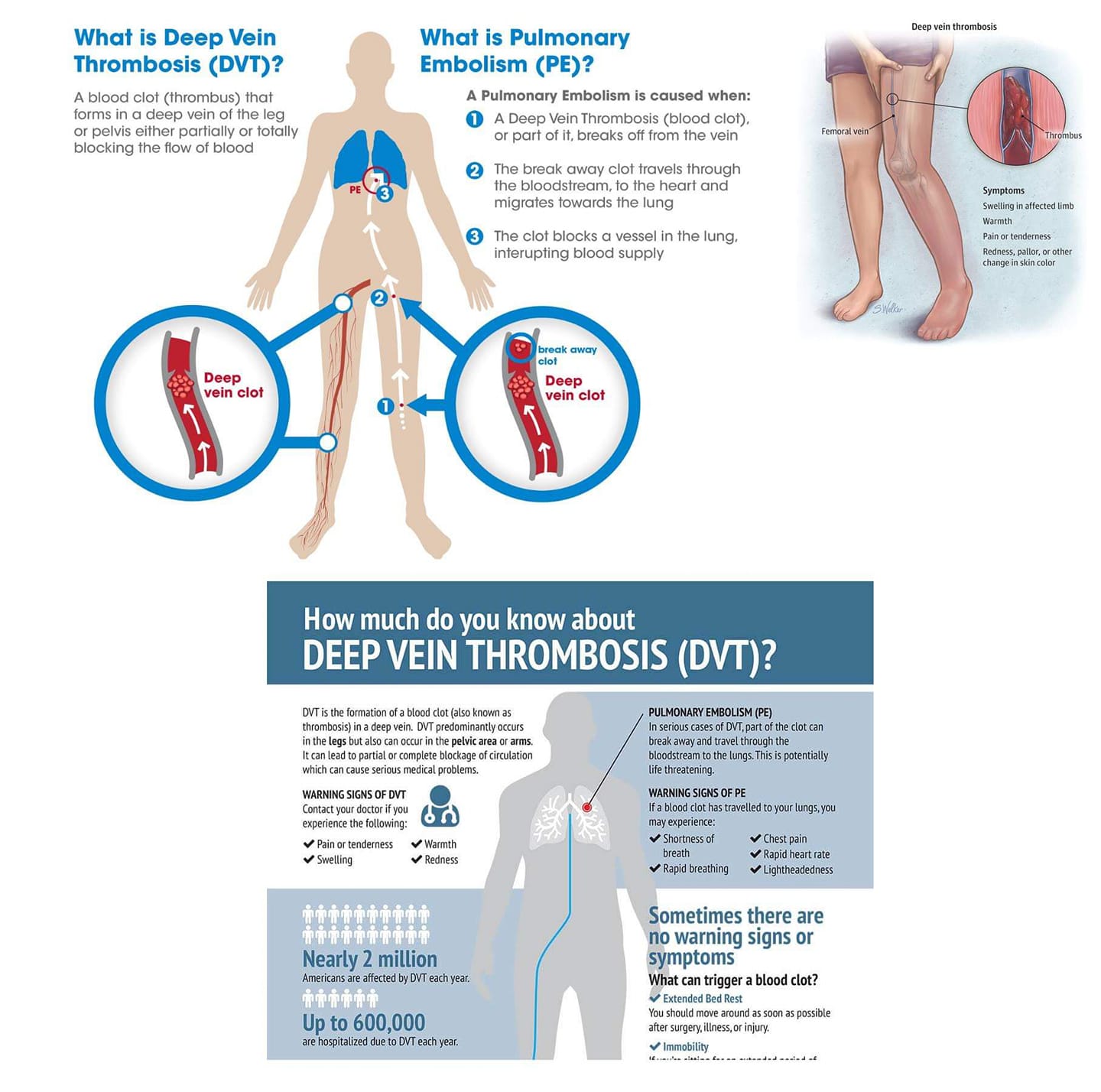

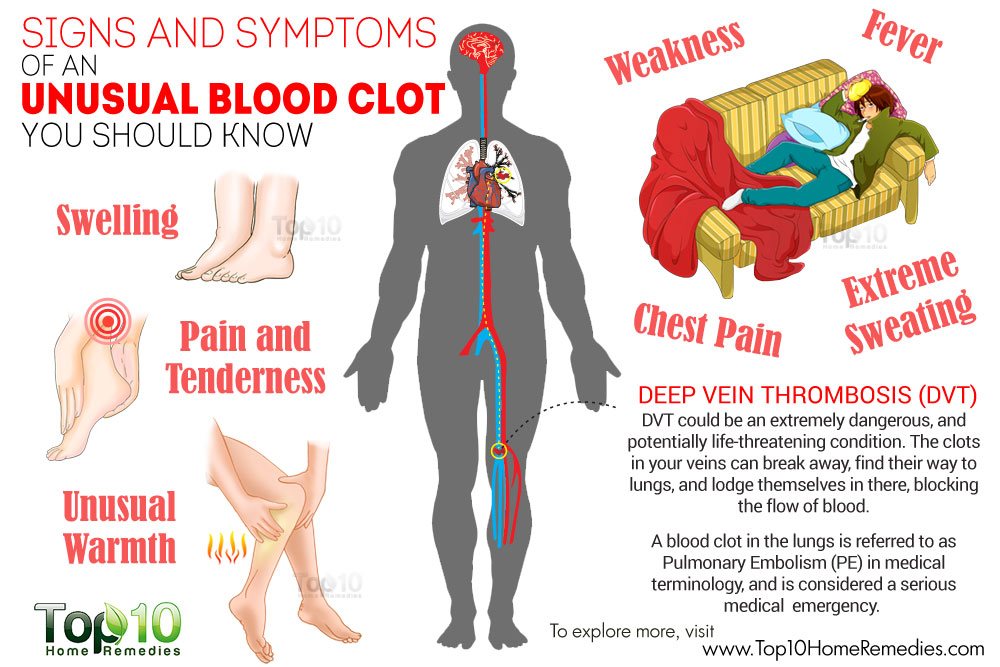 D., Katherine Armstrong, M.D., MS
D., Katherine Armstrong, M.D., MS I., Panchenko E.P., Andriyashkin V.V. Venous thrombosis in the practice of a therapist and surgeon.-M: Planida, 2012.-336s.
I., Panchenko E.P., Andriyashkin V.V. Venous thrombosis in the practice of a therapist and surgeon.-M: Planida, 2012.-336s.
